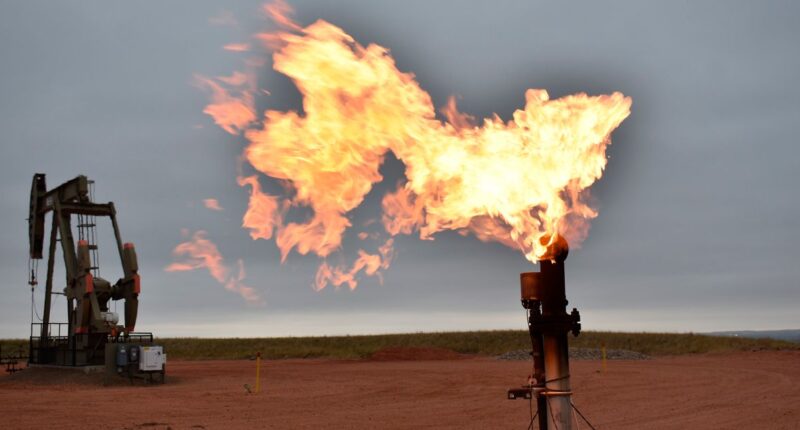
Oil and gas companies would need to spend just a small fraction of their earnings on minimizing methane releases to have an outsize impact on curbing climate-altering greenhouse-gas emissions, but action has been lacking, the International Energy Agency said Tuesday.
An investment of $75 billion from oil and gas companies—equivalent to 2% of the sector’s latest annual net income—between now and 2030 would cut the energy sector’s direct greenhouse-gas emissions by 15% by the same year, the Paris-based agency said in a report. That would lay the groundwork for the sector to be able to reach net zero emissions by 2050, the IEA said.
Of that $75 billion, the agency estimates listed international producers would need to spend about $4 billion with the remainder of the investment roughly split between nationally owned companies and smaller independent producers, 60% of which are based in North America.
Methane is a big contributor to global warming. Ton for ton, methane contributes more to global warming than the more widely known carbon dioxide. Methane trapped in the earth’s atmosphere is responsible for around 30% of the rise in global temperatures since the Industrial Revolution, according to the IEA.
The energy sector accounts for 40% of all human-caused methane emissions, most of which come from oil and gas companies that release it as a byproduct. Oil and gas producers often intentionally release unneeded methane or burn it off in a process known as flaring.
The Biden administration’s Inflation Reduction Act includes a plan to charge oil and gas companies for methane emissions, as well as almost $1.6 billion to help these businesses emit less methane.
The U.S. and the European Union have also spearheaded a pledge, signed at the COP26 summit in 2021, to reduce global methane emissions. The U.S. Methane Emissions Reduction Act Plan includes tighter regulations, increased transparency and incentives including $47 million to fund research into technologies that reduce methane emissions.
Energy companies in the U.S. have said such measures would add to costs just as Biden has called on them to pump more oil to help tamp down high energy prices.
However, the IEA argues that policy makers should go further, including by banning intentional methane releases unless there is an emergency.
“Methane abatement in the oil-and-gas industry is one of the cheapest options to reduce [greenhouse-gas] emissions anywhere in the economy,” the IEA said. But “overall progress has been much too slow, despite the record profits that the oil-and-gas industry saw in 2022.”
Methane emissions rose for a third consecutive year in 2022, the IEA said in February, coming close to hitting a record. Despite industry promises to reduce methane releases, emissions from the energy sector rose to 135 million metric tons in 2022, inching above the previous year but still slightly below a prepandemic high.
The IEA projects that $55 billion of the investment to cut methane would go into upstream production, including exploration and extraction, while $20 billion would go toward technologies targeting downstream production, including refining and processing. The investment would enable oil and gas companies to reduce methane emissions by identifying and quickly repairing methane leaks as well as upgrading older infrastructure that is prone to leaking.
Other steps could involve investing in technology that captures released methane to either use it as an energy source or sell it. Energy companies could earn around $45 billion on the sale of that captured methane between now and 2030, helping to compensate for the cost of investment, the IEA said.
The efforts, however, could face particular difficulty in poorer nations, where nationally run oil companies or small independent producers lack the funds or inclination to invest in technologies that can mitigate methane emissions, the agency said.
Such nations account for between $15 billion and $20 billion of the total $75 billion figure, the IEA said, leaving a large financing gap that would need to be filled by an international effort from governments, big energy companies or charities.
China and India are the world’s two largest emitters of methane from all sources, which includes sectors other than energy, such as agriculture. The U.S. is a close third, followed by Russia, Brazil and Indonesia, respectively.
Write to Will Horner at [email protected]
Copyright ©2022 Dow Jones & Company, Inc. All Rights Reserved. 87990cbe856818d5eddac44c7b1cdeb8








